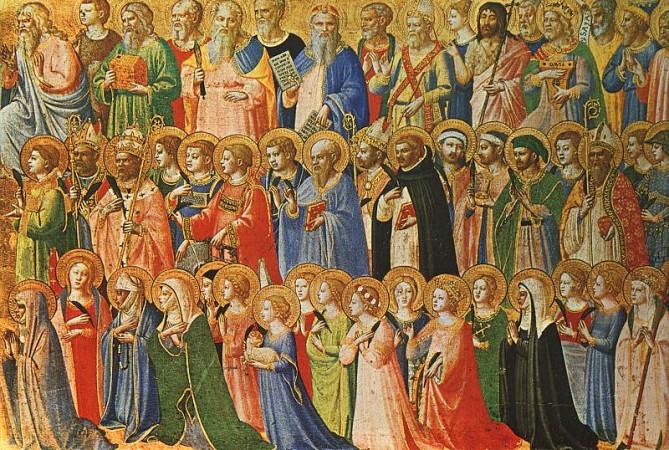
All Saints' Day is a celebration dedicated to all Christian saints, particularly those who have no special feast days of their own, in many Anglican, Protestant and Roman Catholic churches.
Also known by other names such as All Hallows Tide, All-Hallomas, or All Hallows' Day, it is annually celebrated on 1 November although in many eastern churches it is celebrated on the first Sunday after Pentecost.
In order to mark the All Saints' Day 2014, here are five important things to know about the festival, including its importance, background and history.
- Some sources have noted that the idea of All Saints' Day dates back to as far as the fourth century, when the Greek Christians observed a festival on the first Sunday after Pentecost, which usually falls in late May or early June. There are other reports that claim a commemoration of "All Martyrs" began to be observed as early as 270 CE although no specific date is known.
- It was in 835 CE, when Pope Gregory IV made All Saints' Day an authorised holiday that the observance gained its prominence.
- It is also speculated that the date for the event (1 November) could be an attempt to replace or belittle the ancient Pagan Festival of the Dead (also known as Samhain).
- This festival is sometimes confused with 'All Souls' Day', which was first instituted at the monastery in Cluny in 993 CE before its spread among Christians. Observed on the next day after All Saints' Day, the celebration, however, is also related to a day of alms giving and praying for the dead.
- The festival is observed with great enthusiasm in many countries across the world. In countries like Spain, Portugal and Mexico, people make various offerings while many also bring flowers to the graves of dead relatives in other European countries such as Austria, Croatia, Poland, and Romania. It is also observed in parts of Asia, including Philippines.
- Among many important and common symbols associated with the day are a sheaf of wheat, Rayed Manus Dei (hand of God), the crown and images of individual saints.















